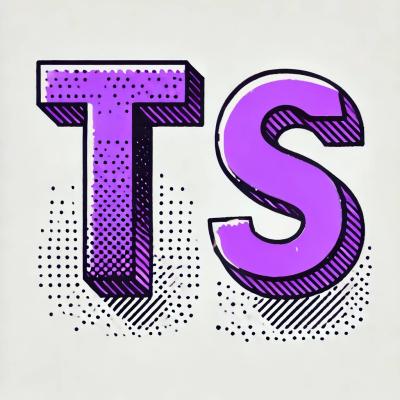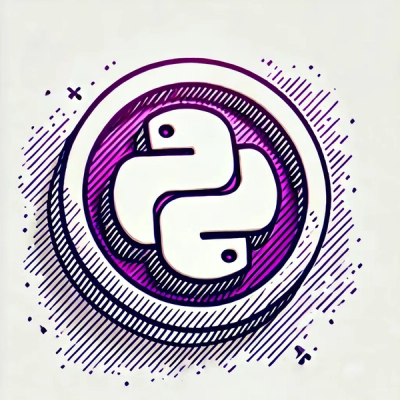
Security News
Node.js Moves Toward Stable TypeScript Support with Amaro 1.0
Amaro 1.0 lays the groundwork for stable TypeScript support in Node.js, bringing official .ts loading closer to reality.
dialog-polyfill
Advanced tools
The dialog-polyfill npm package provides a polyfill for the HTML <dialog> element, enabling the use of the <dialog> element in browsers that do not natively support it. This allows developers to create modal dialogs with ease, ensuring compatibility across different browsers.
Basic Dialog Creation
This code demonstrates how to create a basic dialog using the dialog-polyfill package. It includes the necessary CSS and JavaScript files, registers the dialog element, and shows the dialog when a button is clicked.
<!DOCTYPE html>
<html>
<head>
<link rel="stylesheet" type="text/css" href="dialog-polyfill.css">
<script src="dialog-polyfill.js"></script>
</head>
<body>
<dialog id="myDialog">This is a dialog</dialog>
<button id="showDialog">Show Dialog</button>
<script>
var dialog = document.getElementById('myDialog');
dialogPolyfill.registerDialog(dialog);
document.getElementById('showDialog').addEventListener('click', function() {
dialog.showModal();
});
</script>
</body>
</html>Closing the Dialog
This code demonstrates how to close a dialog using the dialog-polyfill package. It adds a close button inside the dialog and attaches an event listener to close the dialog when the button is clicked.
<!DOCTYPE html>
<html>
<head>
<link rel="stylesheet" type="text/css" href="dialog-polyfill.css">
<script src="dialog-polyfill.js"></script>
</head>
<body>
<dialog id="myDialog">
This is a dialog
<button id="closeDialog">Close</button>
</dialog>
<button id="showDialog">Show Dialog</button>
<script>
var dialog = document.getElementById('myDialog');
dialogPolyfill.registerDialog(dialog);
document.getElementById('showDialog').addEventListener('click', function() {
dialog.showModal();
});
document.getElementById('closeDialog').addEventListener('click', function() {
dialog.close();
});
</script>
</body>
</html>Dialog with Form
This code demonstrates how to create a dialog with a form using the dialog-polyfill package. The form includes input fields and buttons for submission and cancellation, and the dialog is shown when a button is clicked.
<!DOCTYPE html>
<html>
<head>
<link rel="stylesheet" type="text/css" href="dialog-polyfill.css">
<script src="dialog-polyfill.js"></script>
</head>
<body>
<dialog id="myDialog">
<form method="dialog">
<p><label>Enter your name: <input type="text"></label></p>
<menu>
<button value="cancel">Cancel</button>
<button value="default">Submit</button>
</menu>
</form>
</dialog>
<button id="showDialog">Show Dialog</button>
<script>
var dialog = document.getElementById('myDialog');
dialogPolyfill.registerDialog(dialog);
document.getElementById('showDialog').addEventListener('click', function() {
dialog.showModal();
});
</script>
</body>
</html>SweetAlert2 is a popular library for creating beautiful, responsive, customizable, and accessible popup boxes. Unlike dialog-polyfill, which focuses on providing a polyfill for the native <dialog> element, SweetAlert2 offers a wide range of customization options and built-in themes for creating various types of alerts and modals.
Bootstrap is a comprehensive front-end framework that includes a variety of components, including modals. Bootstrap's modal component is highly customizable and comes with built-in styles and JavaScript functionality. While dialog-polyfill aims to provide a polyfill for the native <dialog> element, Bootstrap offers a more extensive set of UI components and utilities.
jQuery UI is a curated set of user interface interactions, effects, widgets, and themes built on top of the jQuery JavaScript Library. It includes a dialog widget that can be used to create modal dialogs. Unlike dialog-polyfill, which focuses on the native <dialog> element, jQuery UI provides a wide range of UI components and interactions.
dialog-polyfill.js is a polyfill for <dialog> and <form method="dialog">.
Check out some demos!
<dialog> is an element for a popup box in a web page, including a modal option which will make the rest of the page inert during use.
This could be useful to block a user's interaction until they give you a response, or to confirm an action.
See the HTML spec.
You may optionally install via NPM -
$ npm install dialog-polyfill
There are several ways that to include the dialog polyfill:
dist/dialog-polyfill.js script directly in your HTML, which exposes a global dialogPolyfill function.import (es modules)require (commonjs/node)// direct import (script module, deno)
import dialogPolyfill from './node_modules/dialog-polyfill/dist/dialog-polyfill.esm.js';
// *OR*
// modern es modules with rollup/webpack bundlers, and node via esm module
import dialogPolyfill from 'dialog-polyfill'
// *OR*
// traditional commonjs/node and browserify bundler
const dialogPolyfill = require('dialog-polyfill')
This polyfill works on modern versions of all major browsers. It also supports IE9 and above. It can work when used inside Shadow DOM, but it's not recommended.
<head> of your document, and the JS anywhere before referencing dialogPolyfill.dialogPolyfill.registerDialog(), passing it one node at a time. This polyfill won't replace native support.<dialog> elements!<head>
<link rel="stylesheet" type="text/css" href="dist/dialog-polyfill.css" />
</head>
<body>
<dialog>
I'm a dialog!
<form method="dialog">
<input type="submit" value="Close" />
</form>
</dialog>
<script src="dist/dialog-polyfill.js"></script>
<script>
var dialog = document.querySelector('dialog');
dialogPolyfill.registerDialog(dialog);
// Now dialog always acts like a native <dialog>.
dialog.showModal();
</script>
</body>
In native <dialog>, the backdrop is a pseudo-element.
When using the polyfill, the backdrop will be an adjacent element:
dialog::backdrop { /* native */
background-color: green;
}
dialog + .backdrop { /* polyfill */
background-color: green;
}
In the polyfill, modal dialogs have limitations-
The major limitation of the polyfill is that dialogs should not have parents that create a stacking context.
The easiest way to solve this is to move your <dialog> element to be a child of <body>.
If this isn't possible you may still be able to use the dialog. However, you may want to resolve it for two major reasons-
To position a dialog in the center (regardless of user scroll position or stacking context), you can specify the following CSS-
dialog {
position: fixed;
top: 50%;
transform: translate(0, -50%);
}
This is also provided as a helper CSS class in the polyfill CSS, .fixed.
You can apply by using HTML like <dialog class="fixed">.
The WAI-ARIA doc suggests returning focus to the previously focused element after a modal dialog is closed.
However, this is not part of the dialog spec itself.
See this snippet to add this, even to the native dialog.
FAQs
Polyfill for the dialog element
The npm package dialog-polyfill receives a total of 161,204 weekly downloads. As such, dialog-polyfill popularity was classified as popular.
We found that dialog-polyfill demonstrated a not healthy version release cadence and project activity because the last version was released a year ago. It has 1 open source maintainer collaborating on the project.
Did you know?

Socket for GitHub automatically highlights issues in each pull request and monitors the health of all your open source dependencies. Discover the contents of your packages and block harmful activity before you install or update your dependencies.

Security News
Amaro 1.0 lays the groundwork for stable TypeScript support in Node.js, bringing official .ts loading closer to reality.

Research
A deceptive PyPI package posing as an Instagram growth tool collects user credentials and sends them to third-party bot services.

Product
Socket now supports pylock.toml, enabling secure, reproducible Python builds with advanced scanning and full alignment with PEP 751's new standard.